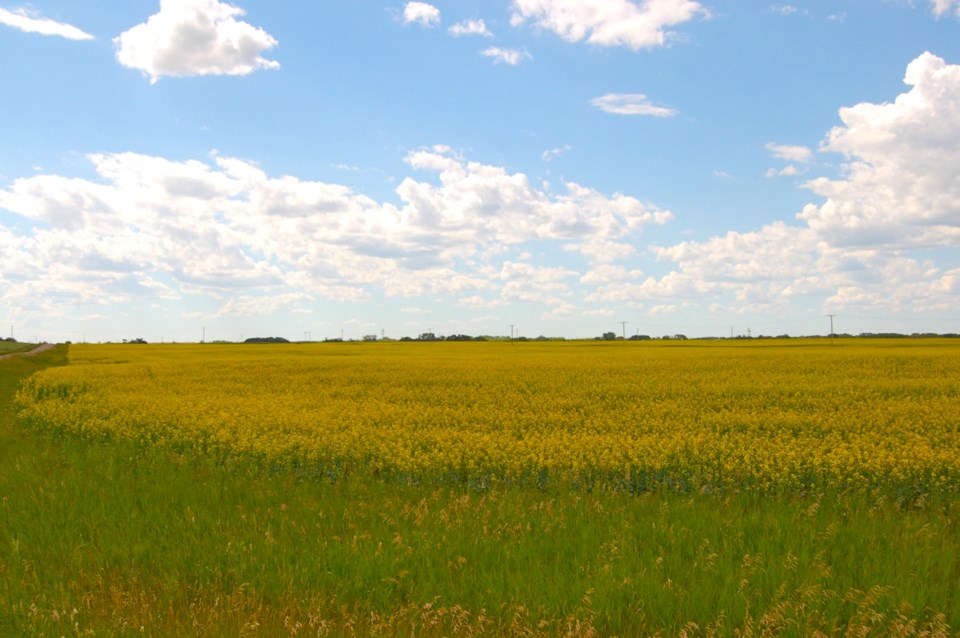Once again southeast Saskatchewan turned into a mesmerizing quilt tissued of blooming crop fields. The later seeding and uncommonly chilly June affected the traditional schedule for many farmers in the region.
Lifestyles approached Toby Torkelson, an Oungre-area farmer, who is also a senior grain merchant for the Rayglen Commodities Inc. out of Saskatoon, to talk about the condition of crops they are seeing at their farm.
The family runs Torkelson Commodities Ltd. and farms over 6,000 acres of land west of Oungre. And with all the knowledge and experience they have, the Saskatchewan weather still turns every new farming year into a tricky challenge.
This year wasn’t an exception, with a lot of change happening this summer. The season started on the dry side and shifted to quite wet conditions by the middle of July, which turned out to be a positive and a negative thing at the same time.
“Some of the crops are looking better. Durum wheat looks quite good. The canola has improved a lot. It started out with poor emergence and looking quite shabby, to filling in quite nicely. These late rains have helped the germination. It does look a lot better,” said Torkelson.
On the other hand, excessive rain started to cause some problems with pulse crops.
“On our farm, we are seeing some aphanomyces root rot, which of course you can’t control. There is no fungicide that’s going to stop or cure root rot,” said Torkelson, noting that at some quarters the disease is really bad and unfortunately will dramatically affect the pulse crop yield this year.
“If you don’t have a healthy root, you are not going to have a healthy plant and you are not going to have seed production.”
The aphanomyces root rot this year seems to be hurting lentils at Torkelson farm. Peas are also affected by the disease, but not as bad, and chickpeas seem to be almost disease-free.
The family tries to maintain a third ratio, almost evenly splitting their land between oilseed, cereal and pulse.
Even though more rain probably won’t hurt canola and wheat, in general, Torkelson believes that they’ve received enough moisture.
“Any additional moisture for the year is probably going to be more of a detriment than a benefit. There is enough moisture to finish the crop.”
Now farmers just need some nice dry days to get them to harvest, which seems to be quite late this year. The family already started working on getting the bins, combines and other equipment ready, but crops are still far from С����Ƶ finished.
“Wheat is fully-headed, flowering. The pulses are in full-flower-early pods. Canola is making quite a few pods, but it’s still flowering,” said Torkelson.
The pulses were seeded later this year and that will push the harvest even further into August.
“Everything is on the later side this year. Because of the poor emergence and later germinations. So we are going to have to wait on the barley, on the canola. Right now looks like we are looking at a mid to later August start,” said Torkelson.
The Torkelson family usually hires three workers to help them to get crops off the fields and into the bins. But with a later harvest this year, seasonal employment won’t happen until later in August as well.




